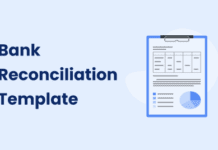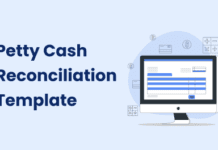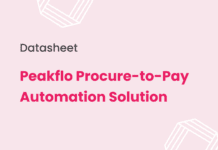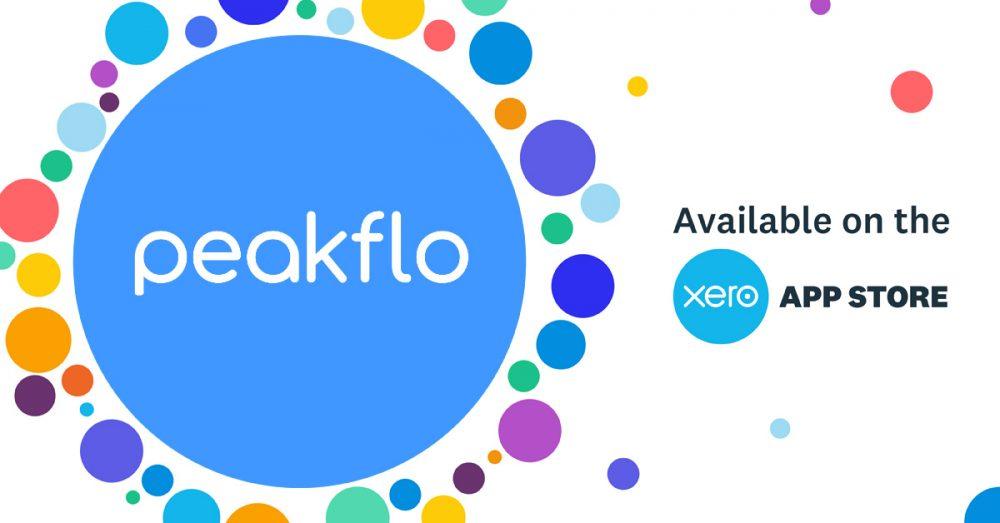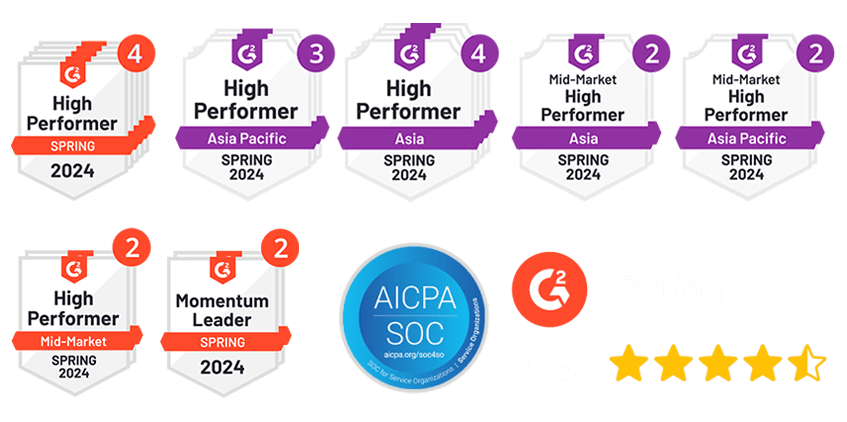Businesses today face mounting pressure to automate complex tasks while maintaining quality and creativity. Traditional automation handles routine work well, but struggles with tasks requiring original thinking, contextual understanding, and adaptive problem-solving.
Generative AI agents have emerged as a solution to this challenge. These sophisticated systems go far beyond simple chatbots or basic automation tools. Since OpenAI introduced ChatGPT at the end of 2022, these AI systems have changed how organizations approach content creation, decision-making, and customer interactions.
What makes these agents different? Unlike traditional AI that follows predefined rules, generative agents operate autonomously within their domains of expertise. They combine creative capabilities with independent decision-making, allowing them to analyze data, generate original content, and execute specific actions based on business needs. The potential value is substantial—generative AI for enterprise applications could yield between $2.6 trillion and $4.4 trillion annually across more than 60 use cases.
Why should this matter to your business? These agents can handle tasks that previously required human creativity and judgment. They work as digital team members, understanding context, generating original solutions, and adapting to changing requirements without constant supervision.
This guide explains what generative AI agents actually do, how they differ from other AI systems, and their practical applications for businesses. You’ll learn how these agents work, see real examples across industries, and understand both their capabilities and limitations.
Whether you’re exploring AI options for the first time or looking to expand your current understanding, this guide provides the practical information you need to evaluate generative agents for your organization.
What is a Generative AI Agent?
Image Source: Biz4Group
A generative AI agent is software that can independently complete complex tasks and meet objectives with minimal human supervision. These agents go beyond simple automation by combining the creative power of large language models (LLMs) with the ability to act autonomously in pursuit of specific goals.
Understanding generative AI agents requires recognizing how they differ from traditional automation and basic AI tools. These systems represent a fundamental shift in how software can operate within business environments.
Definition and how it differs from traditional AI
Generative AI agents operate differently from both traditional AI systems and basic generative AI tools. Traditional AI excels at pattern recognition and data analysis but follows predefined rules to analyze data and make predictions without creating original content. Basic generative AI tools like simple chatbots can produce new text, images, and other media based on training data, but they lack independent decision-making capabilities.
Generative AI agents advance beyond these limitations by incorporating agency—the ability to act independently, break complex jobs into discrete steps, and complete work with minimal human intervention. These agents possess the power to determine which actions to take to fulfill objectives set by humans.
Key operational differences include:
- Traditional AI: Follows predetermined rules for analysis and predictions
- Basic generative AI: Creates new content based on prompts, but requires constant direction
- Generative AI agents: Make independent decisions, plan sequences of actions, and adapt to changing conditions
Additionally, these agents can perceive their environment, process multimodal information including text, images, audio, and video, and understand the context of assigned tasks.
Key traits: autonomy, creativity, and context awareness
Three essential characteristics define how generative AI agents function in business environments:
Autonomy serves as the foundation of these systems. Unlike standard chatbots that merely respond to individual prompts, generative AI agents can perform multiple tasks in sequence, using memory and tools, without constant human direction. They plan, execute, and achieve goals largely on their own. This self-directed capability makes them valuable for automating complex workflows that previously required human oversight at each step.
Creativity enables these agents to generate original content across multiple formats—text, images, audio, and code. They simulate aspects of human creativity and problem-solving by learning patterns within vast datasets. This creative capability allows them to assist human creators by generating ideas, drafts, or prototypes, accelerating the creative process while supporting rather than replacing human ingenuity.
Context awareness represents the third defining characteristic. This refers to the system’s ability to interpret information relative to its environment, user behavior, historical data, and current tasks. A context-aware agent adapts its responses based on understanding the broader goal, user intent, previous interactions, and relationships between different parts of a system. Context awareness enables these agents to tailor content and interactions to specific needs, creating more personalized and relevant experiences.
These three traits working together enable generative AI agents to function as virtual team members, interacting through natural language rather than programming code. These systems have evolved from simple tools into sophisticated business partners that can enhance human capabilities across numerous operational areas.
Types of Generative AI Agents in 2025
Image Source: Bacancy Technology
Different types of generative AI agents serve distinct business functions. Each category has evolved to handle specific tasks, from content creation to complex decision-making. Understanding these categories helps businesses choose the right tools for their needs.
Text-based agents (e.g., GPT-4, Gemini)
Text-based agents handle the majority of business writing and communication tasks. Systems like OpenAI’s GPT-4 and Google’s Gemini models generate content ranging from customer service responses to detailed reports and marketing copy.
GPT-4 excels at creative writing, language translation, and providing detailed answers to complex questions. Gemini Pro offers multimodal capabilities, processing text alongside code, images, and audio seamlessly.
Gemini 2.0 Flash represents the latest advancement in this category. This version delivers enhanced performance at twice the speed of earlier models while supporting multimodal outputs, including natively generated images mixed with text and multilingual audio.
Image generation agents
Visual content creation has been simplified through image generation agents. These systems use advanced models like Generative Adversarial Networks (GANs) to create realistic images, designs, and artwork from text descriptions.
The technology trains neural networks on millions of image-text pairs, teaching AI systems to understand visual concepts. Most current systems use diffusion processes—starting with random noise and gradually refining it into coherent images that match specific prompts.
Business applications include:
- Hero images for blog posts and websites
- Social media content creation
- Slide decks and presentation visuals
- Personalized customer imagery
Platforms like Mistral AI now offer built-in image generation capabilities, allowing agents to create visual content on demand.
Audio and voice agents
Audio generation has expanded beyond simple text-to-speech conversion. Modern voice AI agents handle customer support, reduce response times, and deliver personalized experiences around the clock.
These systems process spoken language, interpret customer queries, access company databases, and generate appropriate responses using a brand’s specific voice and tone.
Advanced voice agents now manage complex interactions, including:
- FAQ responses and transaction processing
- Personalized product recommendations
- Natural conversations with pauses and interruptions
The market includes specialized solutions like Lindy for comprehensive voice capabilities, ElevenLabs for expressive AI voices, and OpenAI’s Whisper for speech recognition.
Decision-making agents
Decision-making agents represent the most sophisticated category. These “reasoning agents” analyze complex problems, evaluate multiple options, and provide strategic recommendations while optimizing computational resources.
Their reasoning capabilities support critical business functions:
- Healthcare: Diagnostic assistance and treatment planning
- Customer Service: Complex issue resolution, including billing disputes
- Finance: Market analysis and investment strategy development
- Logistics: Route optimization and scenario planning
Google’s Project Mariner demonstrates this advancement—an experimental prototype that understands and completes web-based tasks. When tested against the WebVoyager benchmark, it achieved 83.5% accuracy working as a single-agent setup.
Similarly, Jules integrates directly into GitHub workflows, tackling development issues, creating plans, and executing them under developer supervision.
How Generative AI Agents Work
Image Source: Elastic
Understanding how generative AI agents function requires looking at the technology that enables them to process information and create useful outputs. These systems operate through several interconnected components that work together to understand requests and generate appropriate responses.
Training on Large Datasets
Generative AI agents develop their capabilities through exposure to massive collections of text, code, images, and other data formats. This training process resembles how people learn language and reasoning skills—through extensive exposure to examples and patterns.
The quality of training data directly impacts agent performance in real-world scenarios. Many agents utilize specialized datasets like Falcon RefinedWeb (built from CommonCrawl web data) or Cosmopedia (a collection of synthetic text containing over 25 billion tokens) to develop their capabilities. Some focus on domain-specific information, such as the OpenMathInstruct-1 dataset with 1.8 million text-code pairs for solving mathematical problems.
This extensive training allows agents to understand language patterns, recognize relationships between concepts, and learn the statistical foundations needed for generating coherent responses.
Model Architectures: Transformers, GANs, VAEs
Three principal architectures power most generative AI agents:
Transformers have changed natural language processing through their self-attention mechanism. This allows them to focus on different parts of input data simultaneously, examining entire sequences at once and making connections between distant elements. This architecture powers most large language models, enabling coherent, contextually relevant text generation.
Generative Adversarial Networks (GANs) operate through a competitive framework between two neural networks. A generator creates content while a discriminator evaluates it. Through this adversarial process, both networks improve gradually, with the generator learning to produce increasingly realistic outputs.
Variational Autoencoders (VAEs) learn the underlying probability distribution of input data. These models compress information into a lower-dimensional “latent space” before reconstructing it, allowing them to generate new variations of the original data.
Prompt-Response Mechanism
Once trained, generative AI agents process inputs through a systematic prompt-response approach. When receiving a prompt, the model analyzes it and generates appropriate responses based on patterns learned during training.
For text-based agents, this often involves predicting the most likely next words in a sequence. The final layer in autoregressive language models determines the probability that each token in its vocabulary will be the next word. The model then selects tokens based on these probabilities to construct its response.
This process happens rapidly, allowing agents to provide seemingly instantaneous responses to complex queries while maintaining contextual coherence throughout the interaction.
Feedback Loops and Learning Over Time
Generative AI agents improve through continuous feedback mechanisms. User interactions, responses, and corrections provide valuable training data that helps models adjust their parameters and perform better over time.
However, this feedback process presents challenges. When AI-generated content is used to train new AI models—a process called “model collapse”—quality can gradually degrade. To prevent this deterioration, developers must periodically retrain models with fresh, human-generated content and ensure diverse representation in training data.
This ongoing learning process allows agents to adapt to new information and improve their accuracy, though it requires careful management to maintain quality standards.
Real-World Applications Across Industries
Image Source: Medium
Organizations across industries are implementing generative AI agents to solve specific business challenges and achieve measurable results. These systems have moved beyond experimental use cases to become practical tools that improve efficiency and outcomes in core business functions.
Customer Service and Support
Customer service teams are seeing significant improvements with generative AI-powered systems. These agents now handle complex inquiries across multiple languages and channels, providing personalized responses without requiring human intervention.
The results are compelling. One company with 5,000 customer service agents saw issue resolution increase by 14% per hour while reducing handling time by 9% after implementing generative AI.
Healthcare Diagnostics and Planning
Healthcare organizations use generative AI agents to process vast amounts of medical data for diagnostic support. These systems analyze information from wearables, electronic health records, and medical imaging to identify patterns and potential health issues.
AI-powered tools automatically generate radiology reports while flagging potential abnormalities for physician review. However, the technology still requires medical expertise—a recent meta-analysis showed that expert physicians still outperform generative AI models by 15.8% in diagnostic accuracy.
Marketing and Content Creation
Marketing departments have found generative AI particularly useful for content production and personalization. These systems create tailored messages based on individual customer preferences and behavior patterns.
The efficiency gains are substantial:
- Content creation time: Reduced from 60 to 10 minutes in documented cases
- Product descriptions: Automated generation for large catalogs
- Social media content: Streamlined production workflows
Finance and Risk Analysis
Financial institutions implement generative AI agents to handle regulatory compliance and risk assessment tasks. These systems automate the creation of suspicious activity reports based on transaction data analysis.
Risk management teams benefit from the technology’s ability to process large datasets and identify potential issues before they become problems. This proactive approach helps financial institutions make better-informed decisions.
Education and Personalized Learning
Educational institutions use AI agents to create customized learning experiences for students. These systems analyze performance data and interaction patterns to identify knowledge gaps and recommend appropriate resources.
Students receive real-time tutoring support tailored to their individual learning needs. The immediate feedback capability accelerates improvement by addressing learning challenges as they arise.
Benefits and Challenges of Generative Agents
Image Source: LeewayHertz
Organizations implementing generative AI agents discover both remarkable advantages and significant obstacles that require careful management. Understanding these trade-offs helps businesses make informed decisions about adoption and implementation strategies.
Boosting productivity and creativity
Research from MIT involving over 2,300 participants revealed that AI agents boosted team productivity by 60% per employee without sacrificing performance quality. Teams utilizing these agents focused 23% more on content creation tasks and spent 20% less time on direct text editing. Correspondingly, people working with agents are 72% more likely to report feeling “very productive” at their jobs.
These productivity gains extend beyond simple time savings. Teams report higher job satisfaction and more time for strategic thinking when agents handle routine content generation and data processing tasks.
Scalability and personalization
Generative agents excel at handling fluctuating workloads without requiring additional human resources. As demand rises, they adapt effortlessly, enabling businesses to manage higher volumes of tasks across industries with rapidly changing customer requirements. In essence, scaled GenAI creates more representative outputs and processes complexity with enhanced speed and accuracy.
This scalability proves particularly valuable for businesses experiencing seasonal demand spikes or rapid growth phases where traditional staffing approaches become impractical.
Ethical concerns and bias
Despite their capabilities, these systems can generate “hallucinations”—confidently delivering incorrect information. AI models may perpetuate biases present in their training data, potentially reinforcing existing societal inequalities. These ethical concerns demand careful consideration when deploying generative agents in sensitive contexts.
Why does this matter? Biased outputs can damage customer relationships, create legal liability, and undermine decision-making quality. Organizations must establish review processes to identify and correct problematic outputs before they reach customers or stakeholders.
Data privacy and security risks
Security risks increase as agents access proprietary company information and personal data. Proper data governance becomes critical, as inadequate controls may lead to data breaches or exposure of business-critical information. Advanced agents are also vulnerable to prompt injection attacks that could reveal sensitive information.
Financial services and healthcare organizations face particular challenges, as regulatory requirements demand strict data protection measures that may conflict with AI training needs.
Quality control and human oversight
Human judgment remains essential for validating subjective aspects of AI output. Successful implementations require clear control mechanisms, including human-in-the-loop validation for accuracy and compliance. Organizations should consider implementing emergency shutdown mechanisms, especially in high-risk environments.
What does effective oversight look like? Companies need approval workflows for AI-generated content, regular accuracy audits, and clear escalation procedures when agents produce questionable outputs. The most successful implementations combine AI efficiency with human expertise for quality assurance.
Peakflo Gen AI Agents: Turning Business Data into Instant Insights
Managing data across multiple systems is painful—whether it’s finance, sales, ops, or customer success. Peakflo’s Generative AI Agents solve that by connecting to your live systems and producing clear, actionable reports across the business — instantly.
Stop spending hours stitching spreadsheets and dashboards. Peakflo’s agents pull real-time data from ERPs, CRMs, payment platforms, and operational tools to deliver insights that different teams actually use. Need a cash flow forecast for the CFO, a collections digest for AR, a fulfillment risk summary for ops, or a lead-conversion report for sales? The agent creates each report in the right format and tone.
Why teams love it:
- Real-time cross-system sync — fresh numbers from every source, no manual exports.
- Role-aware summaries — reports tailored to the needs of finance, sales, ops, or customer success.
- Action-first insights — the agent highlights anomalies, risks, and recommended next steps so teams can act fast.
Peakflo Gen AI Agents let your teams stop babysitting data and start making decisions. From executive summaries to operational playbooks, get the context you need — without the manual work.
Let Peakflo’s AI Agents generate the reports your whole business can trust. Book a demo today.
A Way Forward
Generative AI agents represent more than just another business tool—they’re digital team members that can handle complex, creative work with minimal supervision. These systems combine autonomous decision-making with creative capabilities, enabling them to adapt to different contexts and generate original solutions.
Unlike traditional automation that follows fixed rules, generative agents make independent decisions, create original content, and understand context. This means they can handle tasks that previously required human creativity and judgment.
Organizations that successfully integrate generative agents while addressing their limitations will see substantial operational improvements. The most effective implementations balance AI capabilities with human expertise—letting agents handle routine creative work while people focus on strategic decisions and relationship management.
The technology will continue improving, but the fundamental approach remains the same: use these agents as capable assistants that augment human capabilities rather than replace human judgment.
FAQs
Q1. What exactly is a generative AI agent? A generative AI agent is an advanced software system that can autonomously complete complex tasks and meet objectives with minimal human supervision. It combines the creative capabilities of large language models with independent decision-making abilities, allowing it to analyze data, generate content, and execute specific actions based on input.
Q2. How do generative AI agents differ from traditional AI systems? Unlike traditional AI that follows predefined rules for data analysis and predictions, generative AI agents can create original content, make decisions independently, and adapt to different contexts. They possess “agency,” meaning they can determine which actions to take to fulfill objectives set by humans, rather than simply following programmed instructions.
Q3. What are some real-world applications of generative AI agents? Generative AI agents are being used across various industries. In customer service, they provide personalized responses to complex inquiries. In healthcare, they assist with diagnostics and treatment planning. Marketing teams use them for content creation and personalized messaging. Financial institutions employ them for risk analysis and fraud detection. In education, they support personalized learning experiences.
Q4. What are the main benefits of using generative AI agents? Key benefits include significant productivity boosts, with some studies showing up to a 60% increase in team productivity. They also offer scalability, allowing businesses to handle fluctuating workloads without additional human resources. These agents enhance creativity and enable greater personalization in various tasks and services.
Q5. What challenges do generative AI agents present? While powerful, generative AI agents come with challenges. These include potential biases in their outputs, data privacy and security risks, and occasional “hallucinations” where they confidently provide incorrect information. Ensuring quality control and maintaining appropriate human oversight are crucial when implementing these systems. Ethical concerns also need to be carefully addressed, especially in sensitive contexts.









![Why AI Sales Calls Are Making Good Sales Reps Even Better [2025 Guide] ai sales calls](https://cdn-kmjmp.nitrocdn.com/YvtqmrsiHUxqerlSiZgbfzqqTARWTElr/assets/images/optimized/rev-834053b/blog.peakflo.co/wp-content/uploads/2025/09/65168cf6-3001-4733-8cbc-12d5684cf449-218x150.webp)













